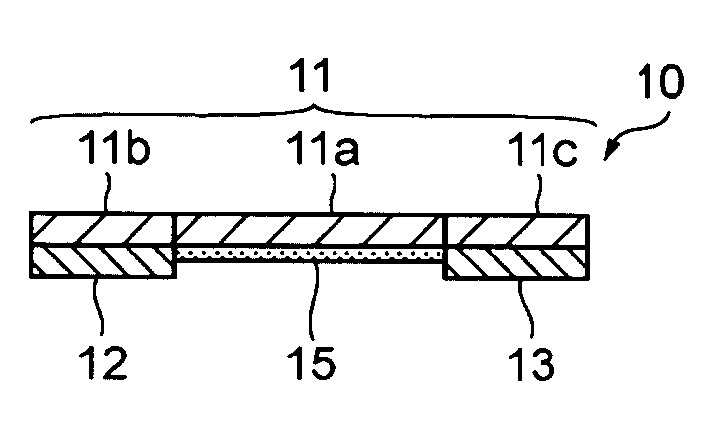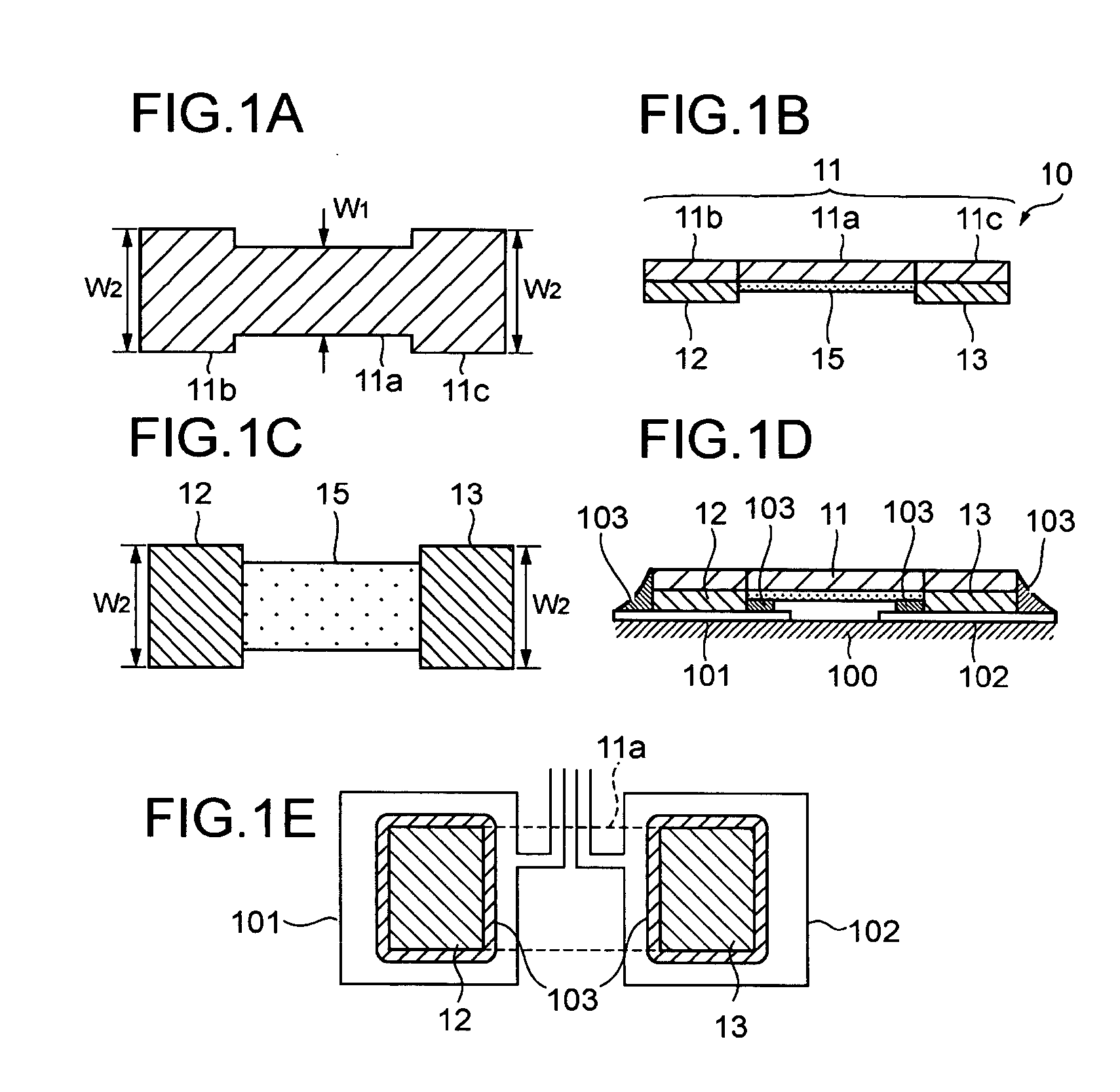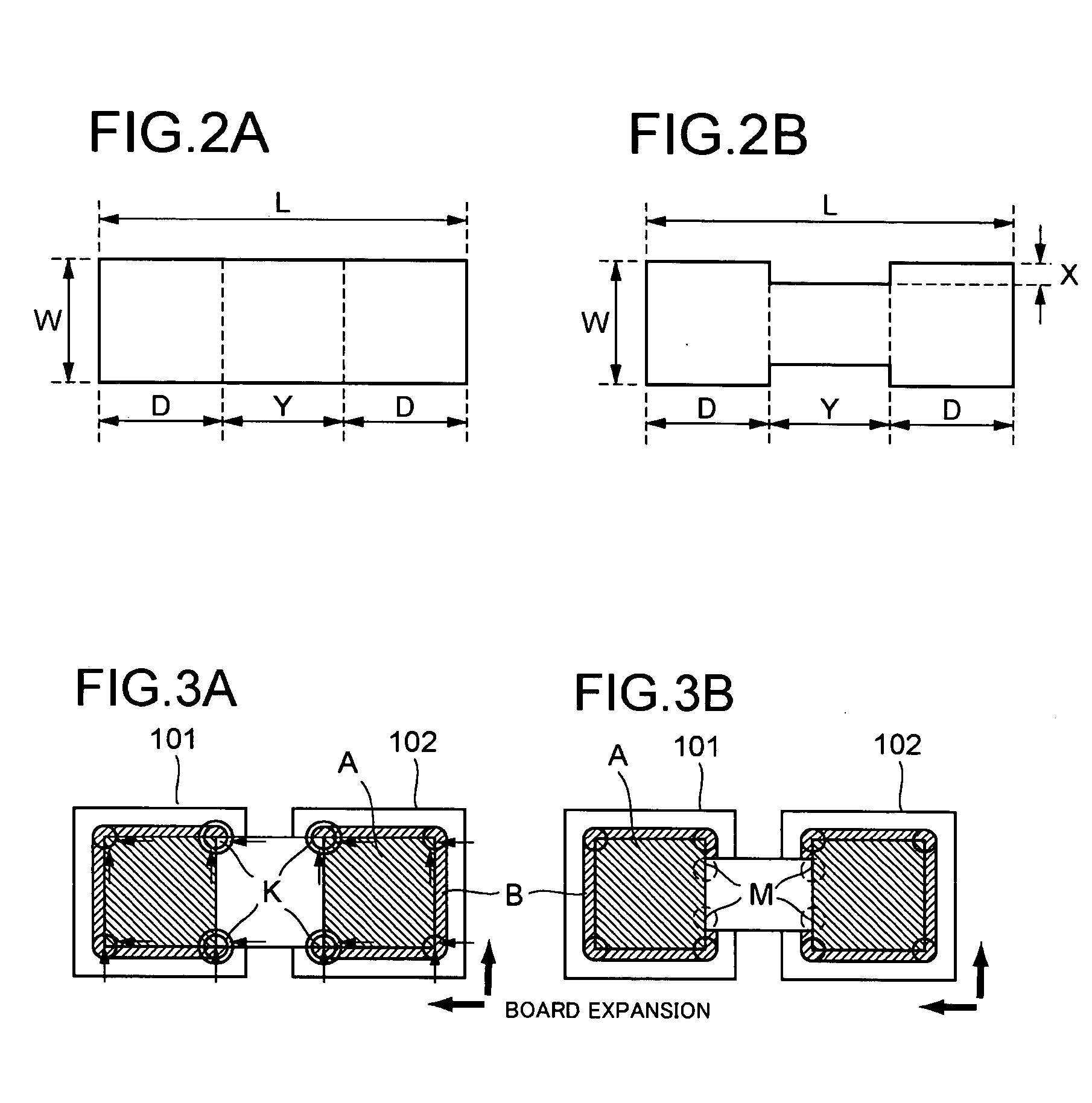Metal plate resistor
a technology of metal plate and resistor, which is applied in the direction of resistors, resistor details, adjustable resistors, etc., can solve the problems of deterioration of soldered joints between aluminum mounting boards and metal plate resistors, and achieve the effect of high stability against aging
- Summary
- Abstract
- Description
- Claims
- Application Information
AI Technical Summary
Benefits of technology
Problems solved by technology
Method used
Image
Examples
first embodiment
[0043]FIGS. 1A through 1E show a metal plate resistor 10 according to the present invention. The metal plate resistor 10 comprises a resistive body 11 in the form of a metal plate, a pair of electrodes 12, 13 in the form of thin plates of Cu (highly conductive metal conductor) joined respectively to the lower surfaces of opposite ends 11b, 11c of the resistive body 11. The resistive body 11 is made of a Cu—Ni alloy, a Ni—Cr alloy, a Fe—Cr alloy, a Pd—Pt alloy, an Au—Ag alloy, an Au—Pt—Ag alloy, or the like. The electrodes 12, 13 have molten solder layers or plated coating layers provided on their respective surfaces for allowing the electrodes 12, 13 to be easily soldered to a land pattern on a mounting board when the metal plate resistor 10 is mounted on the mounting board. An insulating layer 15 is disposed on the bottom surface of the resistive body 11 between the electrodes 12, 13 in covering relation to the bottom or reverse surface of the resistive body 11.
[0044] The metal pla...
fourth embodiment
[0054]FIGS. 6A and 6B show in perspective a metal plate resistor 20 according to the present invention. FIG. 6A shows a resistive body and electrodes of the metal plate resistor, and FIG. 6B shows the metal plate resistor as it is finished into a complete product with a protective coating on the resistive body and a plated coating on the electrodes. As shown in FIG. 6A, the metal plate resistor 20 comprises a resistive body 21 in the form of a metal plate (resistive alloy plate) made of a copper-nickel alloy, a nickel-chromium alloy, or the like, and a pair of electrodes 22 made of copper (highly conductive metal conductor) joined respectively to the lower surfaces of opposite ends of the resistive body 21.
[0055] The resistive body 21 has an H shape or butterfly shape as viewed in plan comprising a main section 21a positioned between the electrodes 22, 22 and a pair of electrode sections 21b, 21b including portions progressively wider than the main section 21a in directions away fro...
PUM
 Login to View More
Login to View More Abstract
Description
Claims
Application Information
 Login to View More
Login to View More - R&D
- Intellectual Property
- Life Sciences
- Materials
- Tech Scout
- Unparalleled Data Quality
- Higher Quality Content
- 60% Fewer Hallucinations
Browse by: Latest US Patents, China's latest patents, Technical Efficacy Thesaurus, Application Domain, Technology Topic, Popular Technical Reports.
© 2025 PatSnap. All rights reserved.Legal|Privacy policy|Modern Slavery Act Transparency Statement|Sitemap|About US| Contact US: help@patsnap.com



